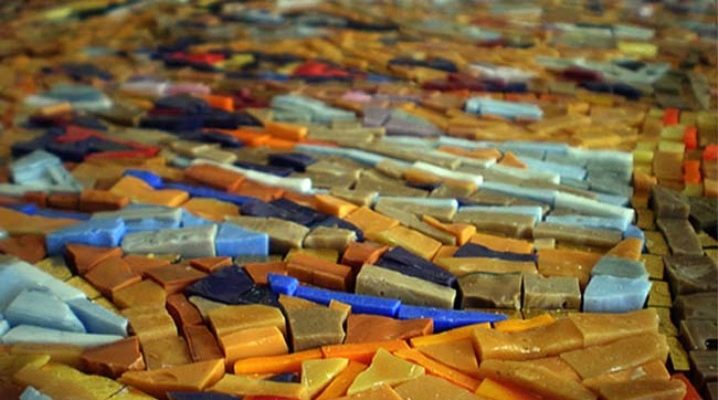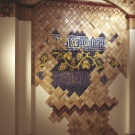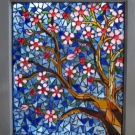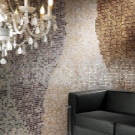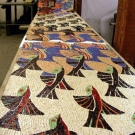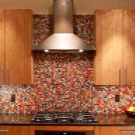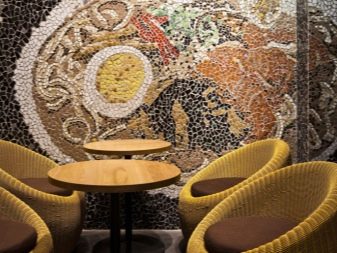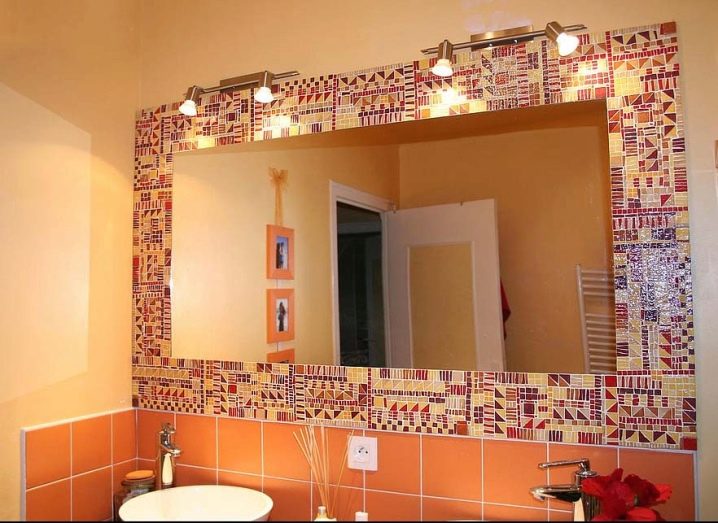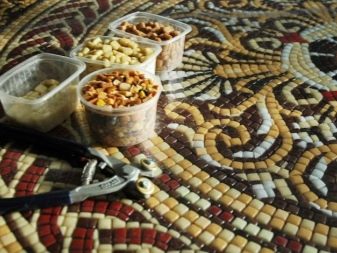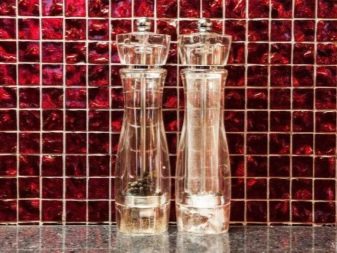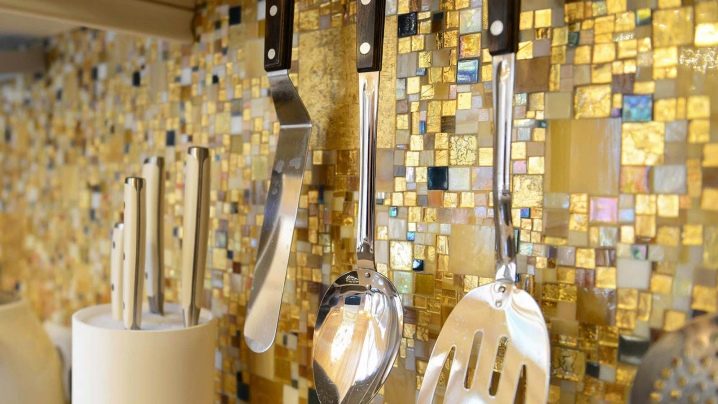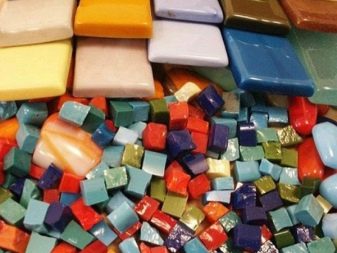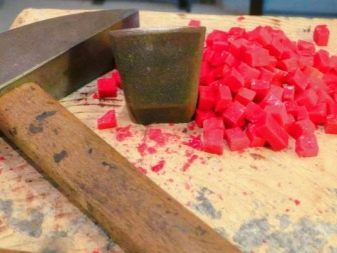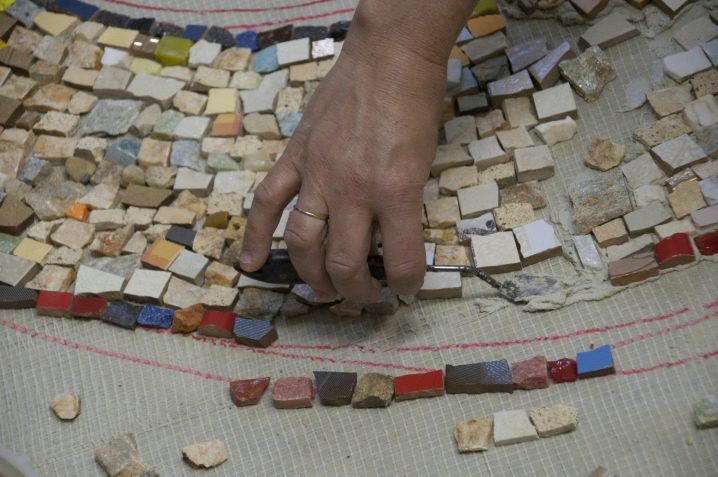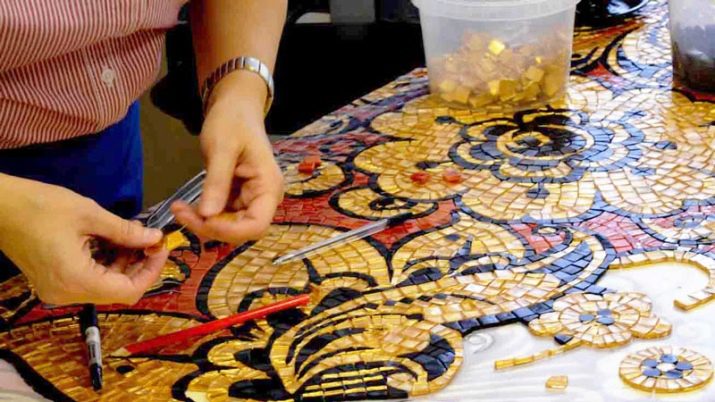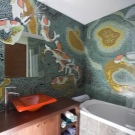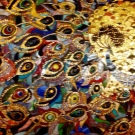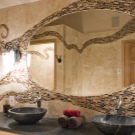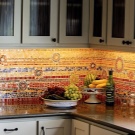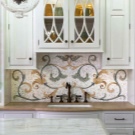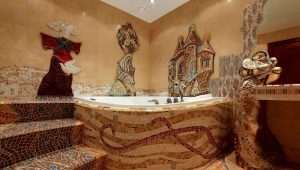Small mosaic in the interior
Smaltoy is called opaque colored glass, obtained by the method of smelting using special technologies with the addition of oxide of different metals. It is used to create mosaic panels. Delightfully bright dense material has a thousand shades.
Features and advantages
Samples of smalt come to us from the V century BC, without changing its color. Beautiful material came to taste the masters of ancient Byzantium - they brought it to perfection. In Russia, smalt has settled since the eleventh century. It was used to decorate Christian churches. Over time, frescoes were used for these purposes, and the smalt was undeservedly forgotten for six centuries. The scientist and artist Mikhail Lomonosov revived in Russia the amazing art of mosaic smalt products. In the 19th century, a mosaic panel of 600 square meters was created for St. Isaac’s Cathedral.
Excluding modern technology, the execution of the smalt mosaic remains laborious manual work that requires accuracy, attention and patience. The color capabilities of the product in the production of classified. However, even thoroughly observing the recipe, each time a different product is obtained. The heterogeneity of the material, a combination of matte, transparent and translucent layers, leads to an amazing internal glow.
And if several colors are involved in the creation of smalt, the product acquires a fascinating gamut of semitones, playing with various shades even in small pieces.
Smalt testers do not have the same shape and size, as is the case with mosaics of other materials. In the creation of panels used small and large chips of different geometric proportions. These may be parts with rough and sharp edges. If the product is made with large elements, then its unpolished surface peculiarly refracts light, saturating the image with unexpected shades. Mosaic panels created from small polished parts, in their artistic qualities are not inferior to the best examples of painting.
The production of smalt
The technology of producing smalt is not much different from the production of glass. The difference lies in the addition of metal oxides:
- silver;
- gold;
- copper.
Raw materials with dyes for 4 hours are placed in a furnace and smelted at a temperature of 1200 degrees. Then poured on a cast-iron plane, rolled out and cut into pieces ("pancakes" or "blocks").
Manufacturers keep recipes of bright colors in secret. In their manufacture it is impossible to achieve a stable color - each time the tone and density of the material change. For example, when copper is added at a certain stage of heating, the product turns pink, then becomes juicy red, and eventually becomes cloudy, acquiring a brown color with copper splashes.
Gold smalt is produced in another way. First, prepare glass tiles with an area of 100-200 square centimeters and a thickness of 1 mm. Gold foil is placed on the tiles, and then the billet is softened in a furnace, not brought to melting. Take out, pour hot glass so that the thickness of the product does not exceed 1 cm. It turns out a beautiful mosaic material. One kilogram of such smalt costs 55-85 thousand rubles, while ordinary color products cost 600-700 rubles.
Do-it-yourself mosaicking
If there is a desire to create a mosaic of smalt with your own hands, and there is no one to take the master class, we will try to explain the basics of working with this material. It should be remembered that smalt is glass, which is sharp, and its caustic is dangerous. Safety measures when working with it is the same as with glassware - you need to take care that sharp chips do not fly on furniture and other surroundings. The presence of children and animals is not allowed at the time of manufacture. Work surface should be covered with oilcloth or paper. Then you need to wear safety glasses, gloves and get to work.
On a wooden stump you need to install a plate of smalt, secured with a chisel and gently split off small pieces with a hammer. The resulting chips should be sorted by color, size and shape.
For registration of the panel will need not only geometrically clear workpieces, but also fragments with uneven edges.
After chipping, the work surface and surroundings must be carefully removed to prevent contact of the household with glass chips. At the next stage, a space is prepared for work on the panel.A suitable base is dry, hard surface, which is cleaned from dust and irregularities. Otherwise, the smalt pieces will flake off. When the surface is prepared, you can lay out a mosaic. There are two methods of this action: direct and reverse.
- With the direct method pieces of glass are laid out on the surface with the glue base facing up. This makes it possible to observe the appearance of the picture.
- Reverse method It involves laying out a mosaic on the wrong side, on which the adhesive base is subsequently poured. The dried canvas should be turned over, and then check the placement of mosaic elements. The second way to work is more difficult, but with its help you can achieve the ideal plane of the canvas.
To form the edges of the picture should be large rectangular pieces. When the contour is ready, you can proceed to further installation. The technique of creating a mosaic is simple, but you need to have patience, color perception and artistic taste. Mosaic panels will suit many styles. It all depends on the plot of the picture.
Smalt can be veneered walls, floors, columns, doors and stairs. Mosaic blends well with other types of finishes.The high cost of mosaic smalt is due to the manual work and features of the material, but this is what makes it delightful. In addition, it is almost eternal, does not require restoration and care, and its beauty will delight many generations.
More information about smalt in the interior you will learn from the following video.
